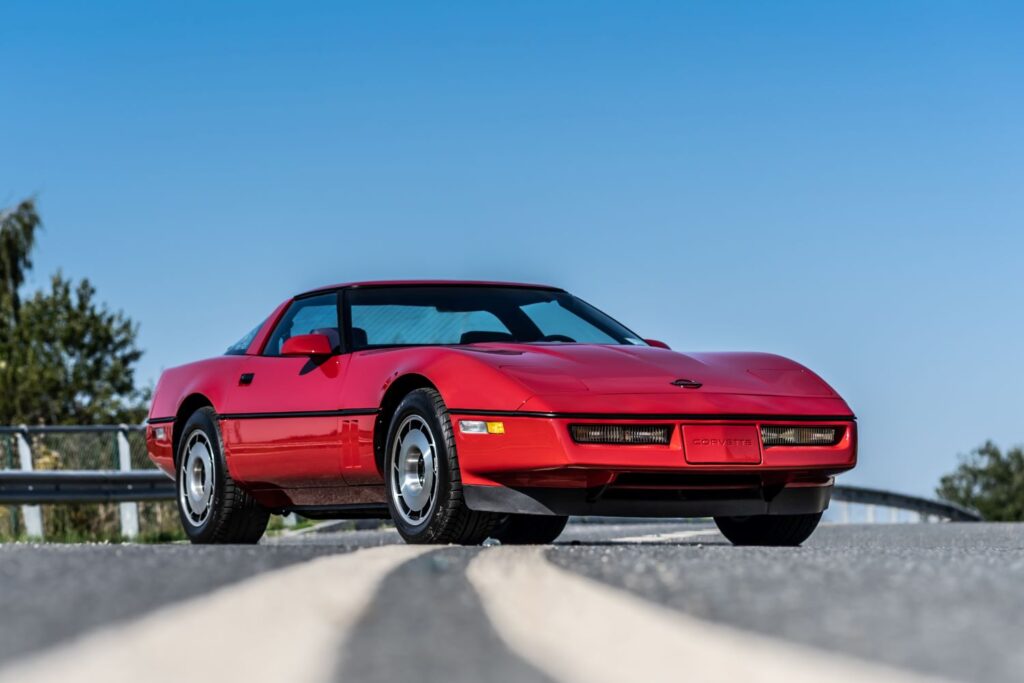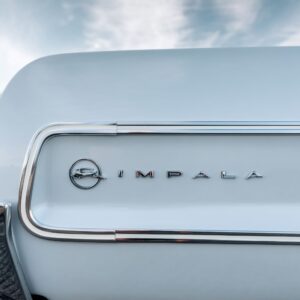The Chevrolet Corvette debuted in 1953. As decades passed, the model has gone through multiple generations. The fourth-generation Corvette, produced from 1984 to 1996 and abbreviated as C4, is a decent generation with some excellent special editions. But what distinguishes the Chevrolet Corvette C4 from the generations before and after?
Origin of the Chevrolet Corvette C4
The fourth-generation Chevrolet Corvette was the brainchild of Dave McLellan. Succeeding the legendary Zora Arkus-Dutov as Chief Engineer in 1975, McLellan redesigned the Corvette from scratch.
Under McLellan’s leadership, the C4 Corvette design team drew on new techniques, switching out the C3’s body-on-frame to a perimeter frame that didn’t rely on body panels for structural support. They changed the material of certain body parts from fiberglass to molded plastic, saving weight without compromising durability.
Furthermore, the design team put a premium on how the Chevrolet Corvette C4 handles. The engineers altered the suspension, adopted a new chassis, and lightweight yet powerful brakes for excellent road performance.
Taking a leaf from Arkus-Dutov’s playbook, McLellan listened to the people who customized and drove cars in races. He incorporated their recommendations into the various model years of the Chevrolet Corvette C4.

How Does the Chevrolet Corvette C4 Differ From Other Corvette Generations?
Whereas the Chevrolet Corvette C3 represented the Seventies, the C4 brought the model into the Eighties. The fourth-generation Corvette introduced new concepts while also keeping many good things from the earlier generations.
Design Aesthetics
The Chevrolet Corvette C4 abandoned the pronounced fenders and curvaceous contours of previous generations. Its profile is subdued and features straight lines. At the same time, the fourth-generation Corvette keeps design elements found on earlier Corvette model years, such as concealed headlights with bright headlight bulbs, louver vents over the side fenders, and circular taillights.
Engine
The 1984 Chevrolet Corvette inherited the Cross-Fire Injection 350ci L83 V8 engine from the last model year (1984) of the previous (C3) generation. Developed to meet emissions and fuel efficiency requirements, the L83 engine produces only 205 horsepower (hp).
The next C4 model year –the 1985 Chevrolet Corvette– switched to the Tuned Port Injection 350ci L98 engine. A modern (for the time) electronic fuel injection (EFI) engine, the L98 produced more hp at higher efficiency and reliability than the L83. Improved versions of the L98 powered subsequent C4 Corvette model years up until 1991.
In 1992, GM unveiled the LT1 engine. Different from the similarly named LT-1 engine in the C3 Corvette generation, the LT1 is the ultimate Small Block Chevy engine.
Different versions of the LT1 powered various GM models like the Chevrolet Camaro, Pontiac Firebird, and Cadillac Fleetwood. In the Corvette C4 generation, the 350ci LT1 featured aluminum cylinder heads and four-bolt mains. It produced 300 hp.
The 1996 Chevrolet Corvette was the final Corvette C4 model year. It came with the option for an LT4 engine. An LT1 modified for enhanced performance, the LT4 produced 330 hp, thanks to features like a redesigned cam profile and cylinder heads with improved flow. Sadly, the LT4 was restricted to 1996 Corvettes with six-speed manual transmission and available for only one year.
Drivetrain
The Chevrolet Corvette C4 1984 has rear-wheel drive and an independent rear suspension. The automatic version uses the 700R4 four-speed transmission. The manual version uses the Nash 4+3 speed transmission, a 4-speed manual with an overdrive mode for the upper three gears. The Nash transmission offers a slight improvement in fuel economy, although not every Corvette fan likes it.
In 1989, the troublesome Nash 4+3 manual/automatic transmission made way for a conventional ZF six-speed manual transmission. In 1990, the 700R4 transmission in the automatic Corvette C4 was renamed 4L60 in 1990. Starting in 1994, automatic Corvettes received electronic control, leading to their transmission being redesignated as 4L60-E.
Car Body
A convertible top is one of the defining features of the Chevy Corvette. However, Chevrolet stopped putting a soft top on the Corvette during 1975.
The Chevrolet Corvette C4 1984 model year didn’t reintroduce the soft top. However, it did have the next best thing, a removable roof panel that can detach from the car to let the occupants feel the wind on their faces.
Fortunately, it didn’t take long for the Chevrolet Corvette C4 to recover its iconic convertible top. The 1986 model year came with an option for a soft top.
The 1986 Chevrolet Corvette C4 also introduced the third brake light. The convertible and coupe versions added the safety feature to comply with new regulations.
Several years later, a special edition of the 1990 Chevrolet Corvette C4 introduced a new rear end design. Its tail lights share the square shapes of the ones on its contemporaries. It also has a convex rear bumper panel, and it can fit wider tires.
The 1991 Chevrolet Corvette C4 debuted a new front end. It dropped the nose inspired by the late-generation C3 for a smoother design with wraparound indicator lights. The redesigned front end appeared in all succeeding C4 model years.
Digital Dash
The 1984 Chevrolet Corvette C4 instrument cluster was a marvel seemingly taken from the bridge of the Starship Enterprise. The digital dash and the powertrain control module (PCM) that sent readings to it received updates over the years.
However, the digital dash disappeared with the 1990 Chevrolet Corvette C4. That model year reverted to analog instrument gauges that stood out in the vehicle’s more modern interior.
The 1994 Chevrolet Corvette C4 was the last fourth-generation model year to receive a redesigned interior. While two more model years followed the 1994 Corvette C4, they didn’t get much attention from the engineers busy designing the first C5 Corvette. However, the last couple of C4 model years did receive special edition models.
Directional Wheels and Turbine Fins
Have you ever noticed the fins built into the wheels of the Chevrolet Corvette C4? Called turbine fins, they channel air over the brakes, improving the Corvette’s stopping performance.
Furthermore, the fourth-generation Chevrolet Corvette uses directional wheels. Their spokes rotate in a certain direction depending on which side of the vehicle their wheel sits on. Furthermore, they all face the same direction, allowing them to take advantage of the turbine fins.
Any information provided on this Website is for informational purposes only and is not intended to replace consultation with a professional mechanic. The accuracy and timeliness of the information may change from the time of publication.



















